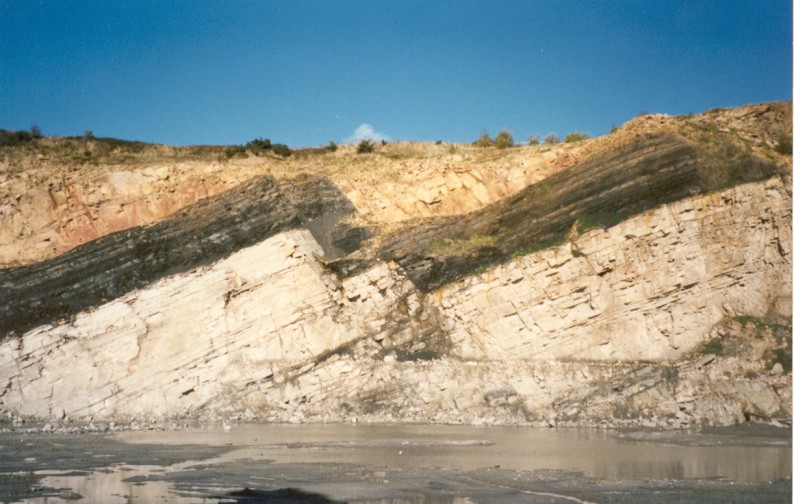

Quarry face showing 2 normal fault surfaces in the Upper Carboniferous sandstone and shale sequence of Round O Quarry, Lancashire, UK. The aggregate displacement on the two fault surfaces is 15m. The photo below shows striations and breccia associated with the footwall fault surface, just below the top of the lower sandstone sequence. See Lindsay et al. (1993) and Childs et al. (1997).
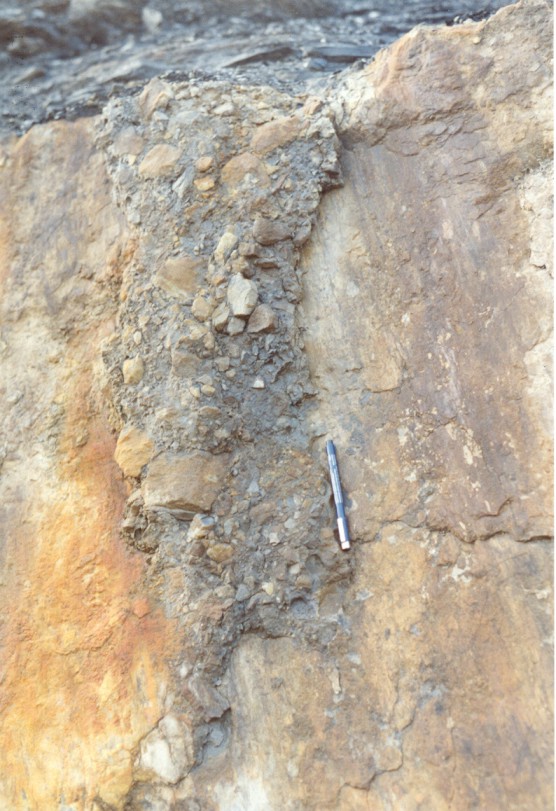
Breccias developed above a striated slip surface showing the dip-slip nature of displacement on the footwall fault of the main Round O fault, Lancashire, UK (see photograph above).
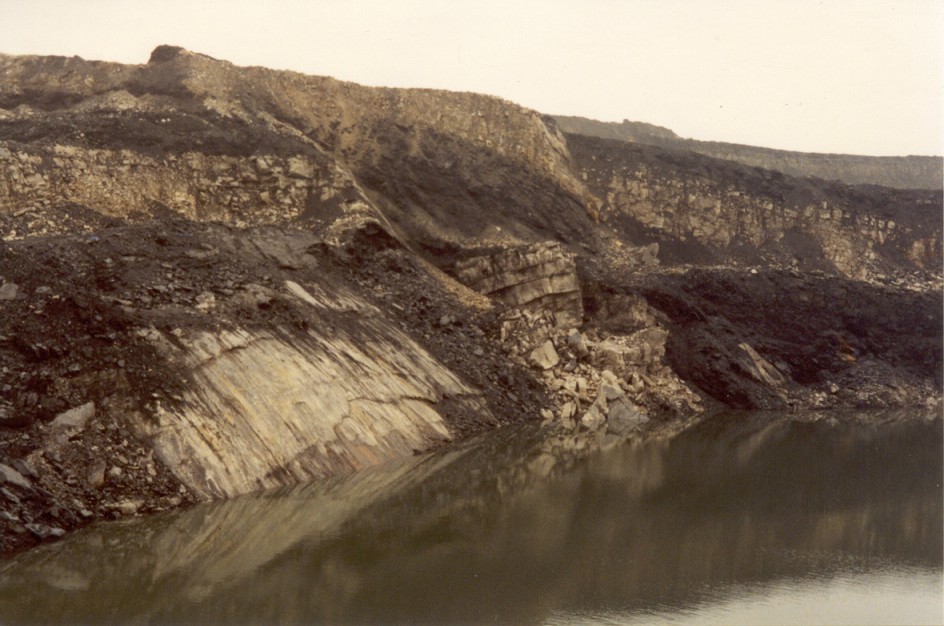
Striated slip surface on a normal fault within the Upper Carboniferous Coal Measure sequence of Plenmellor Opencast, Cumbria, UK. Displacement of a sandstone unit across the fault is approaximately 20m.
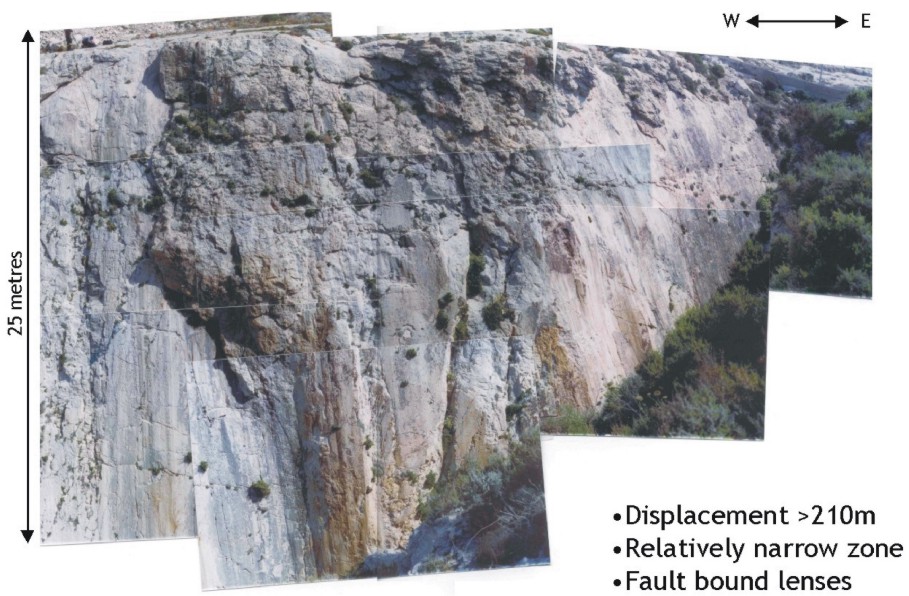
The fault zone of the Maqlaq normal fault, Malta. The fault has a displacement of >210m and this photograph shows a well defined striated slip surface underlying a lense of breccia that is in turn overlain by another striated slip surface (see photos in 'lenses - fault rock' section).
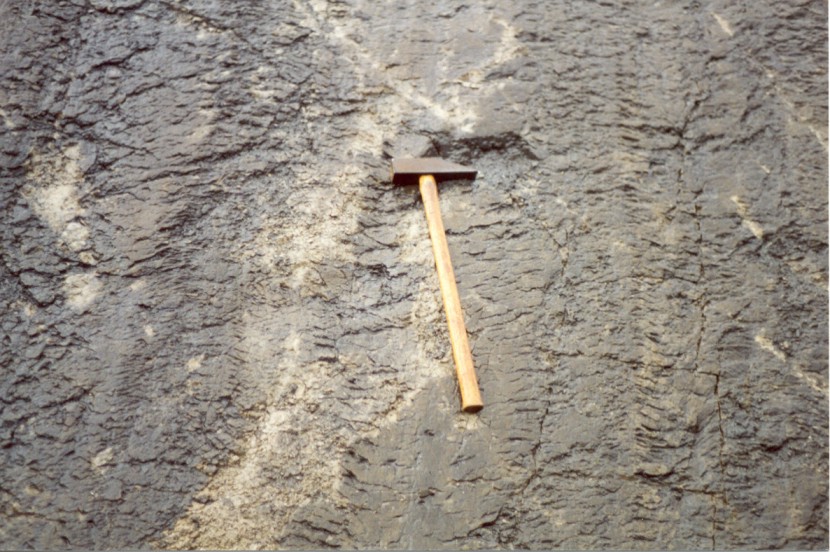
Metre-scale displacement striated slip surface with the Carboniferous sandstone and shale sequence of Round O Quarry, Lancashire. The slip surface is coated by a shale veneer upon footwall sandstones (see Lindsay et al. 1993) and comb fractures are developed approximately perpendicular to the slip direction.
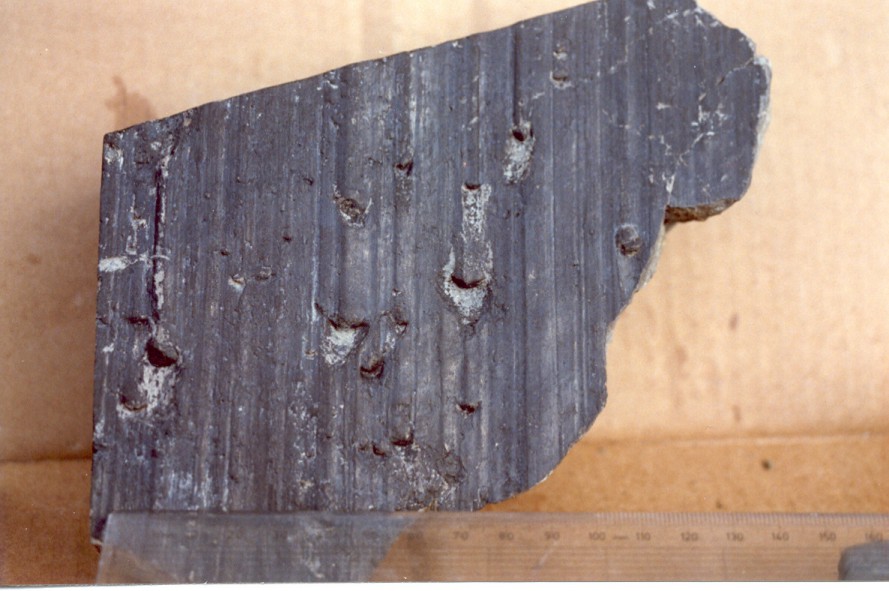
A shale veneered slip surface on a block of sandstone from the footwall of a normal fault with ca 2.5m displacement, Round O quarry, Lancashire, UK. Pronounced striations on the smeared sandstone slip surface are associated with trails of gravel-sized clasts embedded in the footwall with crescentic hollows on their updip sides. No erosion of the shale smear is apparent because the matching hangingwall is a 9m thick shale. Sample is ca 14cm across. See photo below for associated fault rock.
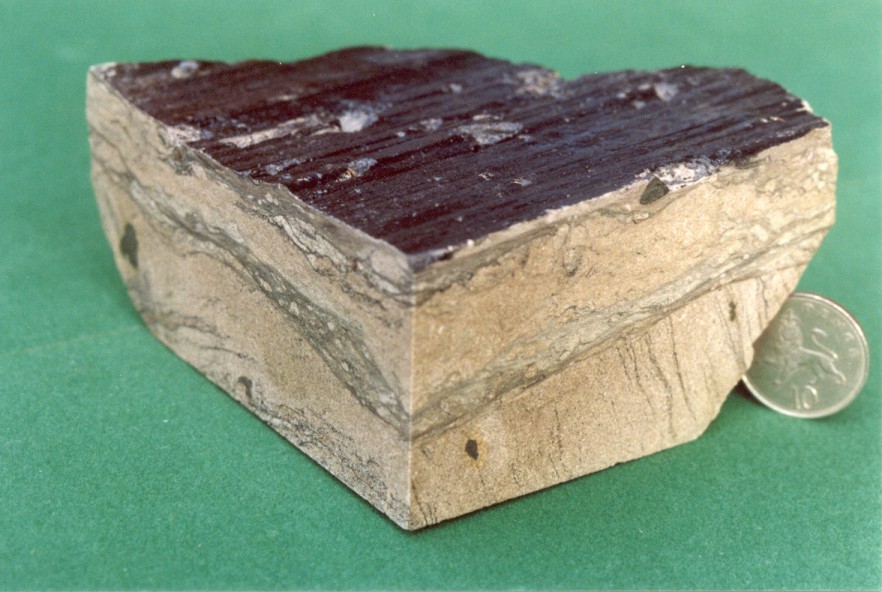
A shale veneered slip surface on a block of sandstone from the footwall of a normal fault with ca 2.5m displacement, Round O quarry, Lancashire, UK. The veneered surface (see also photo above) overlies a 4cm thick cataclastic fault zone which overlies undeformed footwall sandstone. Displacement is top to the left and the fault rock shows down to the left riedel shears. The diameter of the coin is 2.5cm (Lindsay et al. 1993).
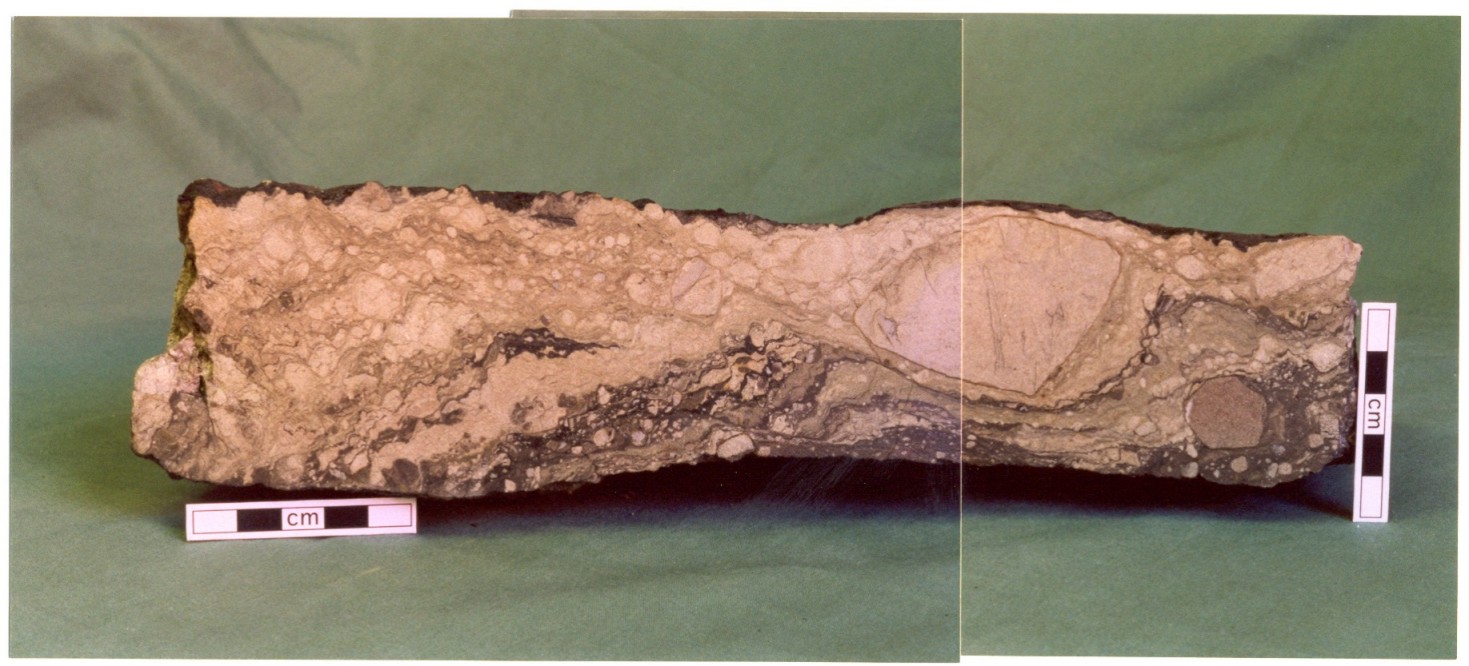
Part of a fault zone from a ca 3m displacement normal fault in sandstones and shales of Round O Quarry, Lancashire, UK. Displacement is top to the right. Gouge and breccias are cross-cut by synthetic riedel shears that cross-cut pre-existing slip surfaces on the top and base of sample.